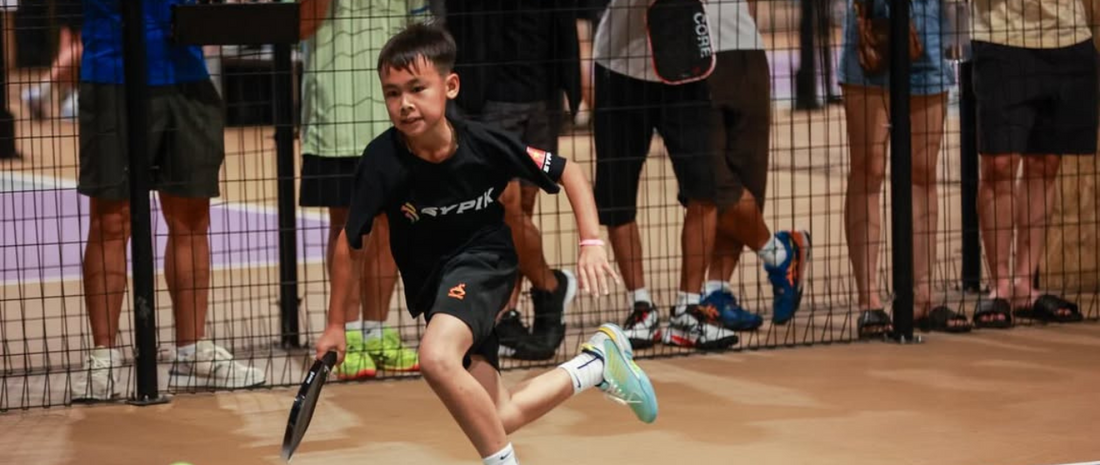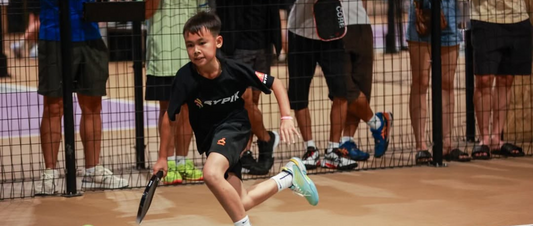
Balancing Sport, Education, and Career: The Reality of Young Pickleball Athletes
Sureena Shree ChandrasekarFor many young athletes, pickleball is no longer just a weekend pastime. It is becoming a serious career path. One that demands sacrifices, difficult choices, and a willingness to take risks. Behind every highlight reel and tournament podium, there is a more complicated reality: balancing sport, education, and financial sustainability.
The Tough Choices
Across Asia, talented athletes are beginning to face decisions that previous generations never had to consider. Do they pursue higher education on a traditional timeline, or press pause to commit fully to pickleball? Do they invest in competing internationally, or stay closer to home to limit costs? For some, these choices come at the age of 18 or 19 when most of their peers are focused solely on studies.
Some players take the bold step of extending or deferring university to give pickleball a real chance. Others attempt to juggle both, attending classes by day and drilling by night. Neither path is easy, but both reflect a growing belief: that pickleball can be more than a hobby. It can be a livelihood.
The Financial Equation
A professional pickleball career requires more than athletic ability, it requires financial planning. Prize money from tournaments in Asia is increasing, but it is still modest compared to sports like badminton or tennis. For many players, earnings are supplemented by coaching sessions, local sponsorships, and occasional brand partnerships.
This patchwork of income sources can be enough to sustain a player, but it demands constant effort both on and off the court. Training, competing, and recovering must be balanced with networking, self-promotion, and relationship building with potential sponsors. The grind is real, and burnout is a genuine risk.
Family and Community Support
Behind every young athlete is a network of support that often includes family, coaches, and training partners who provide both emotional and financial backing. For many in Asia, family approval is crucial. Pursuing an unconventional career in sports means convincing parents that pickleball is not just a phase, but a pathway to stability and success.
Communities also play an important role. Local clubs, academies, and mentors provide players with opportunities to train, compete, and stay grounded. Without these support systems, balancing education and a professional pickleball career would be nearly impossible.
The Emerging Professional Mindset
What sets this new generation apart is their willingness to embrace pickleball as a profession. They treat training like a full-time job, maintain strict recovery routines, and approach tournaments with the seriousness of seasoned athletes.
This shift is significant. It signals that pickleball in Asia is no longer simply recreational. Young athletes are proving that with the right structure inclusive of consistent training, international exposure, and community support, it is possible to carve out a viable career in the sport.
A Roadmap for the Future
As pickleball continues to grow, federations, sponsors, and event organisers will play a bigger role in supporting young players. Scholarships, structured junior pathways, and stronger sponsorship ecosystems can ease the pressure on athletes who are trying to balance it all.
The reality today is that young players are pioneers. They are navigating uncharted waters, building careers in a sport that is still defining itself in Asia. Their sacrifices, whether skipping university semesters, investing their savings into travel, or grinding through back-to-back tournaments, are laying the foundation for the next generation.
Balancing sport, education, and career is never easy. But the players willing to take that leap are proving that pickleball can be more than a passion. It can be a profession, a livelihood, and for some, a lifelong journey.
This article is an excerpt from our interview with Mia Azizul.
Watch the full interview here.
Photos by @cfongraphy via Instagram.









